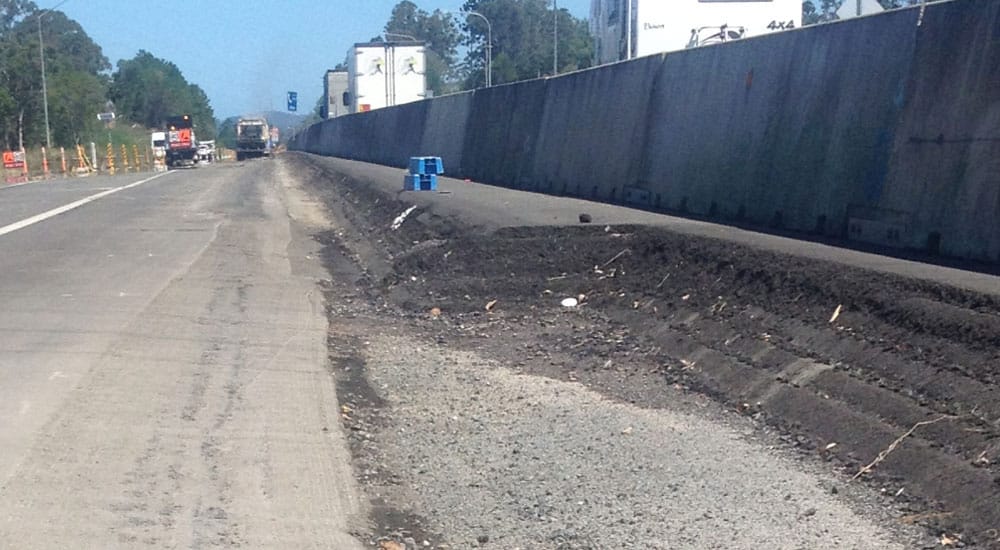
The theory of such Long Life Asphalt Pavement (LLAP) ‘perpetual’ pavements is based on the concept of a Fatigue Endurance Limit (FEL) which ultimately limits the strain of a 9 tonne axle (95th percentile loading under Australian Traffic Conditions) to within the elastic zone of the asphalt and conceptually analyses pavements to reach life spans in excess of 50 years with periodic maintenance.
Current pavement design practices do not recognise the FEL theory and refer to the conventional Shell Fatigue criterion for asphalt pavements to determine the allowable repetitions for a fixed critical micro-strain (µԐ), which in a deep lift asphalt configuration is typically the tensile strain at the bottom of the base asphalt layer. Recent scientific advances in pavement technology for full depth asphalt pavements indicate that if a limiting FEL can be maintained (depending on the underlying support and subgrade CBR) the likelihood of ‘bottom up fatigue cracking’ is no longer the predominant distress mechanism.
Initial test-track trials of the new found methodology indicated that the predominant distress method was ‘top down’ cracking of the asphalt surfacing and levelling course, extending up to 100mm into the pavement for 9-tonne axle repetitions exceeding 60 million cycles.
The benefits in understanding this distress mechanism relates to the reduction in routine expenditure for heavily trafficked road sections of which historically may have been designed for a 20-40 year life and rehabilitated accordingly are now expected to exceed 50 years with the use of periodic maintenance and resurfacing.
This new methodology also adopts a unique approach to give consideration to temperature-depth gradients to capture the thermal transfer in thick asphalt layers which is considered to be far more accurate than the current Weighted Mean Annual Pavement Temperature (WMAPT) approach for determining the representative asphalt properties using developed master curves – the use of the master curves can also more accurately determine the relative modulus and resulting induced strain of asphalt materials under reduced vehicle speeds.
Whilst this method conceptually limits the load induced strain below the FEL, the impacts of overloaded vehicles – particularly on Higher Mass Limit (HML) routes are not clearly understood and caution may be required when using perpetual pavements in these areas.
For more information on Global Road Technology or Long Life Asphalt Pavement (LLAP) please contact GRT.
Are environmental regulations, health and safety concerns or potential profit loss a concern right now?
Contact Us Now